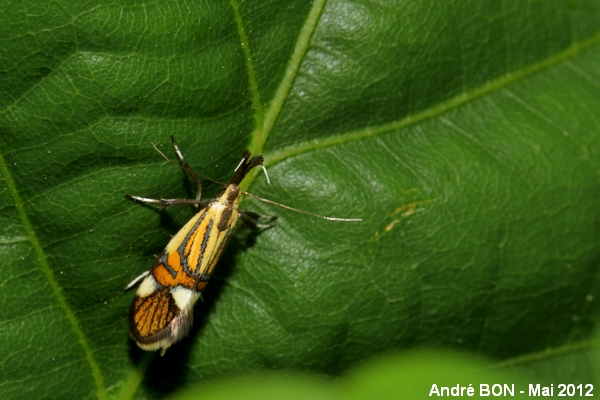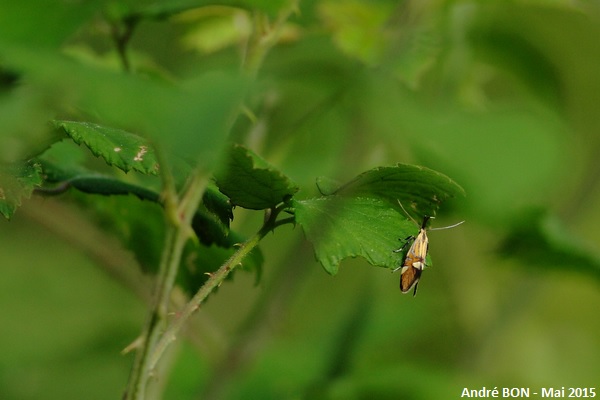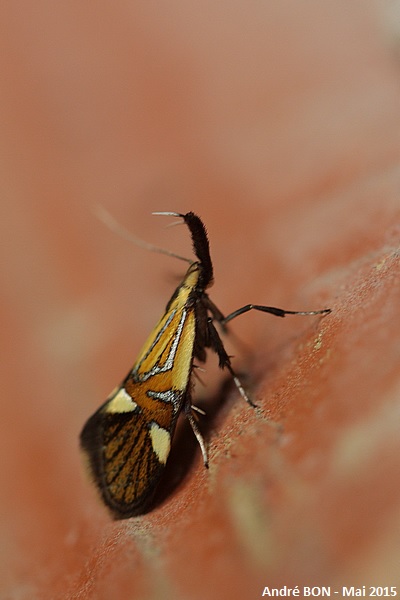


| Alabonia geoffrella (Linnaeus, 1767) |



|
|
Scientific name: Alabonia geoffrella (Linnaeus, 1767) Common name: French name: Œcophore nervurée Order: Lepidoptera Suborder: Microlepidoptera Family: Oecophoridae Subfamily: Oecophorinae Wingspan: 17-21 mm. Biotope: Woodland areas, woodland edges, old hedgerows, marshes. Geographic area: Europe. Flight time: May-June. Number of generations : 1 Caterpillar: White with a brown head. Host plant: Caterpillars grow under the bark of rotting wood or inside dead twigs of Brambles (Rubus fruticosus), Common Hazels (Corylus avellana) or others. |
Alabonia geoffrella is a nice micro moth with bright colours. The wings are a pale rufous ground colour and show metallic blue longitudinal lines. These lines converge and join in the median area where the rufous colour becomes darker. Then you can see two triangle-shaped white patches, one on the costal edge and one on the inner edge. The marginal area is brown with dark longitudinal veins. The fringe is blackish. The labial palps are very large. They are thick and black at the base and end with white points The legs are blackish with white tips. Alabonia geoffrella is active during the day. |
| [To know more about the Alabonia geoffrella] [Next picture] [Top] |

|
I have observed this micro moth in a forest. I have been able to approach for a close-up view but without being able to get a good angle of view. I will content myself with this upper side view for this time. |
| [To know more about the Alabonia geoffrella] [Next picture] [Previous picture] [Top] |

|
The vicinity of the old farm of my childhood shows large areas invaded by brambles. I have been able to observe several specimens of Alabonia geoffrella over there. This is a very nice micromoth but its small size makes it very often unnoticed. |
| [To know more about the Alabonia geoffrella] [Previous picture] [Top] |

|
Being a little patient I was able to observe one specimen which came to land on an old brick wall. Do not clear all the brambles, you will be rewarded with very beautiful micromoths, in addition to blackberry jelly of course! |